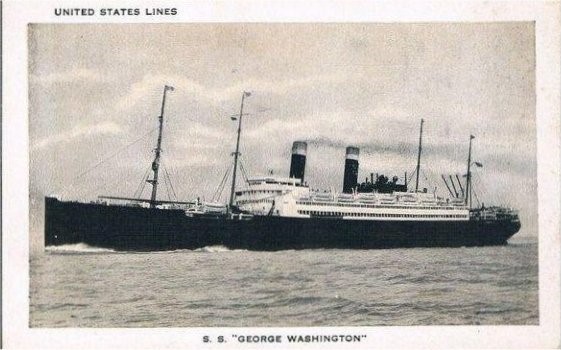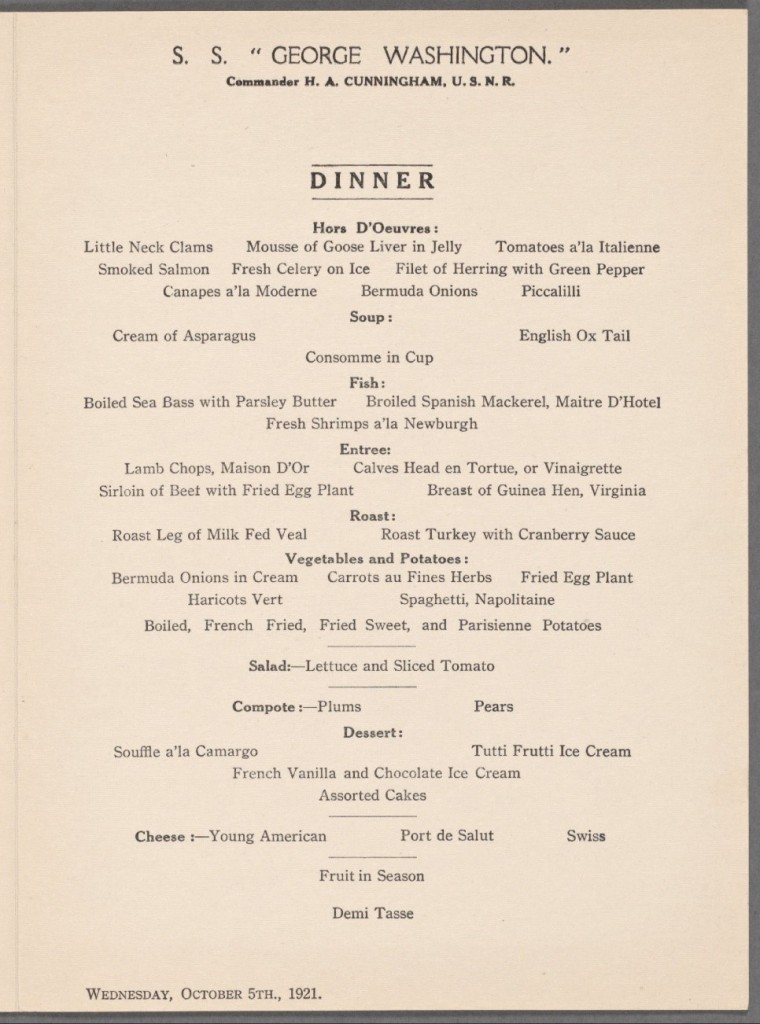The S.S. George Washington
The S.S. George Washington was built in 1908 by the North German Lloyd shipping company and was the largest ship built in Germany of its time with a capacity of about 3,300 passengers. This capacity allotted space for about 560 first class, 430 second class, 450 third class, 1,230 fourth class passengers, and 630 crew members. The team who built the ship were aware of President Washington’s historical importance and aimed to commemorate his significance throughout the ship’s atmosphere and décor. The ship consisted of bedrooms, a smoking section on the upper deck, rooms designated for writing messages, photography dark rooms, a gym, and first-class dining rooms set up with tables seating parties of two to ten.1
The S.S. George Washington was originally used as a transportation vessel, which transported troops and most significantly, President Woodrow Wilson. In 1914, following the outbreak of World War I the ship was docked in New Jersey where it remained inactive until 1917.2 Soon after President Wilson delivered his famous speech addressing his Fourteen Points in 1918, he set sail on the S.S. George Washington to sign the Treaty of Versailles outside of Paris.3 The ship was decommissioned as a transport in November 1919 and returned to making commercial voyages in 1921, which is the year this menu is from. In February 1951, the S.S. George Washington was officially sold for scrapping after suffering from fire damage.4
A Closer Look at the Food on Board
The menu depicted above is a dinner menu from the S.S. George Washington dating back to October 5, 1921. Some dishes featured on the menu include Mousse of Goose Liver in Jelly, English Oxtail Soup, Sirloin Beef with Fried Eggplant, Roast Turkey with Cranberry Sauce, and Soufflé a’ la Camargo. Courses like Fried Eggplant and Roast Turkey and Cranberry Sauce remain prevalent on today’s ships, but other dishes like English Oxtail Soup are less common and may now be considered an oddity to some. Ships and other forms of traveling services have adapted to society’s interests especially from a culinary aspect. In the 1920s, foods such as Calves Head may have been viewed as a specialty, which is comparable to the exotic food found on modern cruise lines including items like Frog Legs and Escargot. These foods were not culturally shocking; instead, they were considered a luxury of their time.5
Brief History of Fried Eggplant
The dish I wanted to recreate from this menu is fried eggplant because I not only enjoy fried eggplant, but I also wanted to see how much the dish has evolved from 1921 to 2020. Eggplant is a vegetable native to India and became popularized in China in the fifth century. The Moorish invasion of Europe and the Arab trade with Italy in the thirteenth century introduced eggplant to European countries. Initially, Europeans rejected eggplant, but in the 1500s, Spanish and Portuguese settlers brought the vegetable to America where it became even more popular. Overtime, different countries around the world began to incorporate eggplant into more dishes such as Fried Eggplant.6
The exact origin of fried eggplant is unknown, but it is assumed to have been an extension of Eggplant Parmesan since the heart of Eggplant Parmesan is Fried Eggplant.7 Mrs. Scott’s North American Cookbook, published in 1921, provides a Fried Eggplant recipe that is most likely similar to the fried eggplant that was served on the S.S. George Washington. The ingredients list is 1 eggplant, 1 egg, 2 tablespoons flour, 1 tablespoon milk, 1 teaspoon salt and pepper to taste, and breadcrumbs or cornmeal.8
Recreation of 1921 Fried Eggplant
I began preparing this dish by peeling and slicing the eggplant into circles. I then seasoned the sliced eggplant pieces with flour, salt, and pepper on both sides and set the slices aside.
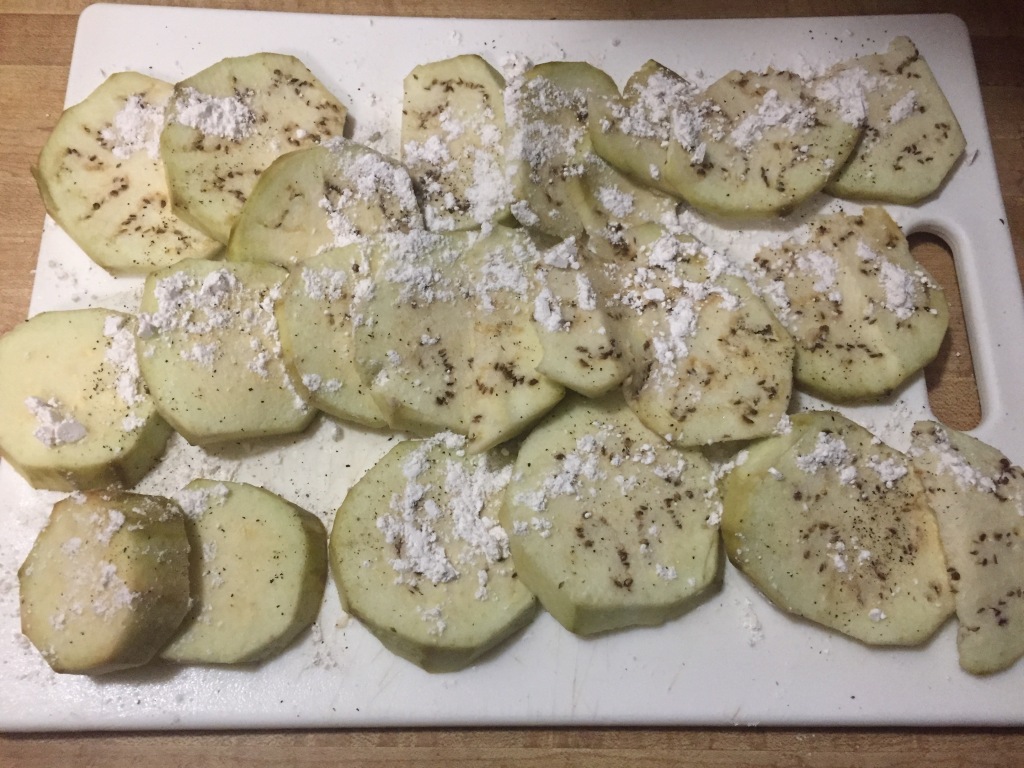
The next step is to make the egg mixture, which consists of 1 beaten egg and 1 tablespoon milk. Once that was complete, I dipped both sides on the eggplant slices into the mixture and dipped the eggplant into the breadcrumbs.
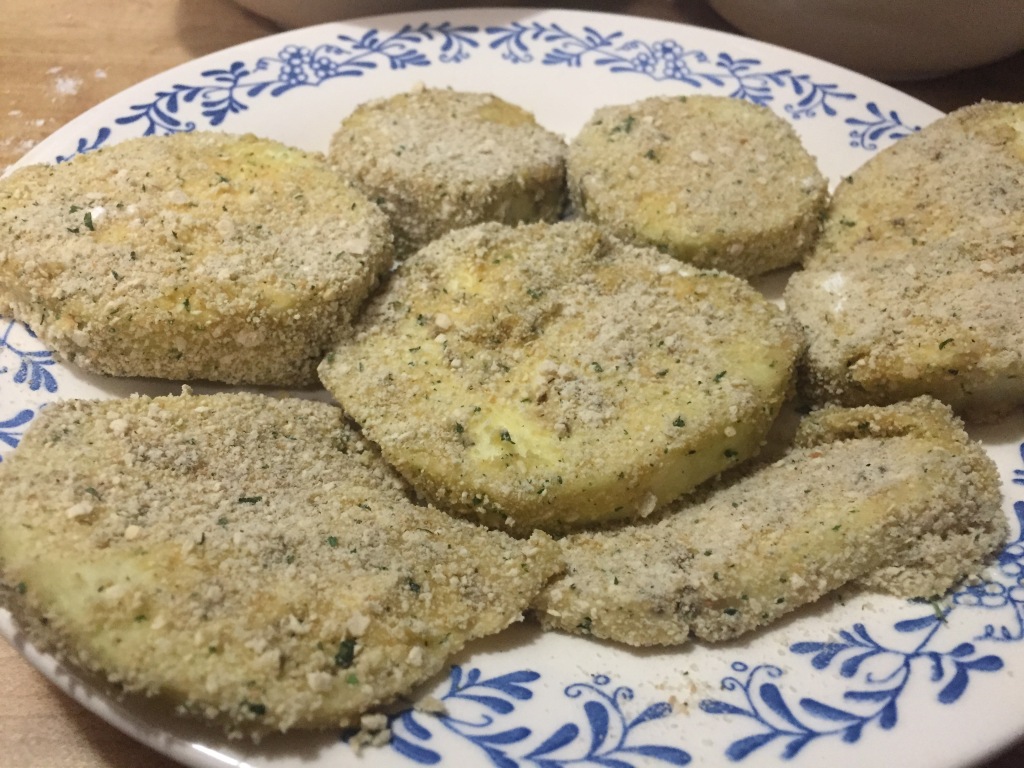
After heating up oil in a frying pan, I placed the breaded eggplant into the frying pan and let the slices crisp on both sides.

Once the eggplant finished cooking, I removed them from the oil and placed them on a paper towel to drain the oil.
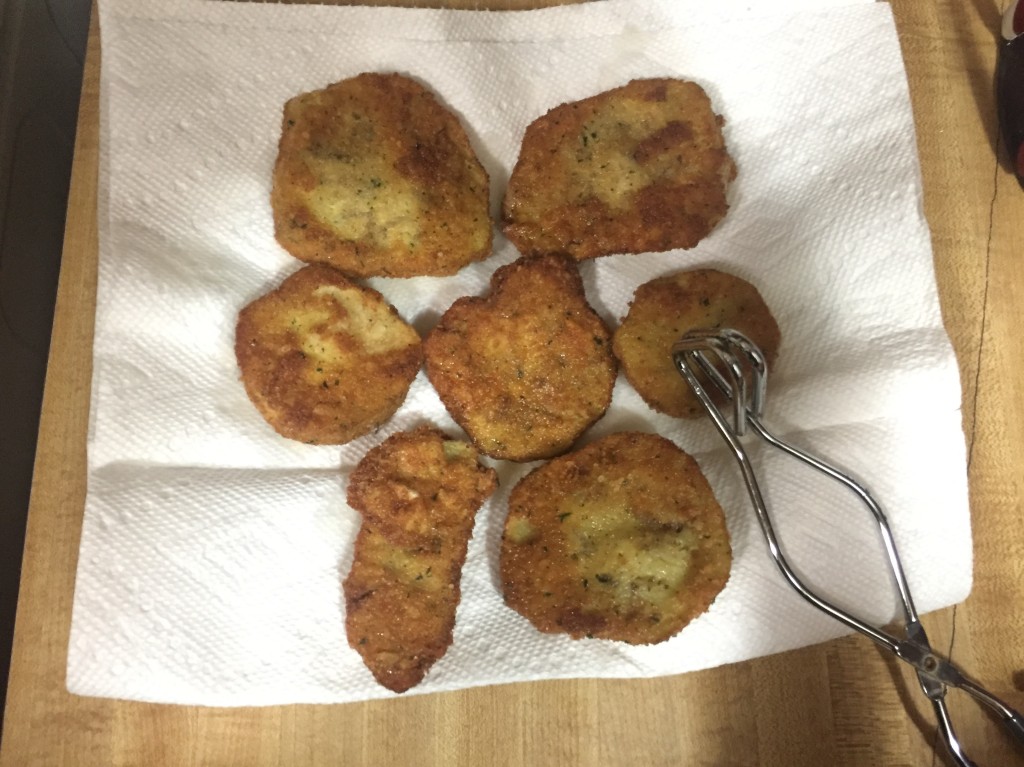
Finally, I served the Fried Eggplant on a plate with a side of marinara sauce.
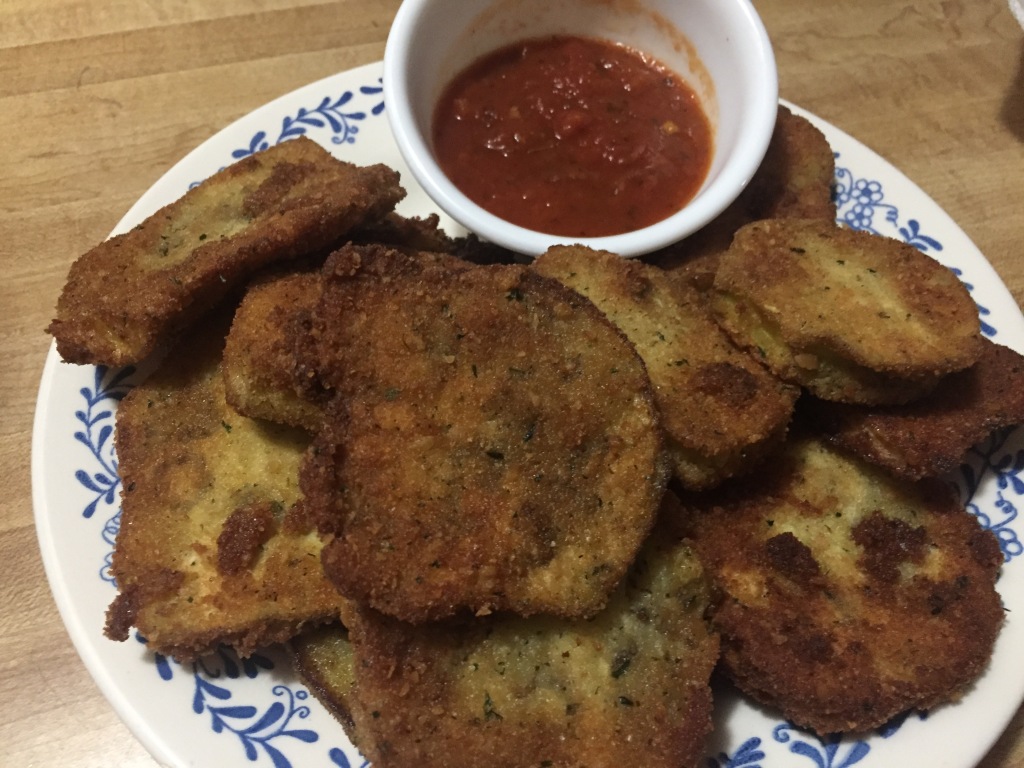
Notes:
1 “Praises George Washington- New German Liner, His Namesake, at South Hampton on Way to New York.” New York Times, June 14, 1909.
2“Information about the Ship Named, S.S. George Washington.” Ship – S.S. George Washington, Family Heritage Library, familytreeheritagelibrary.com/ship/Washington.html.
3History.com Editors. “Treaty of Versailles.” History.com, A&E Television Networks, 29 Oct. 2009, http://www.history.com/topics/world-war-i/treaty-of-versailles-1.
4“NavSource Online: Service Ship Photo Archive.” Transport (AP) Photo Index, www.navsource.org/archives/09/22/22019.htm.
5Menus.nypl.org, New York Public Library, menus.nypl.org/menus/31897.
6Olver, Lynne. “Vegetables.” The Food Timeline–Vegetables, 31 Jan. 2015, www.foodtimeline.org/vegetables.html.
7“A History of Eggplant Parmesan.” Did You Know: Food History – A History of Eggplant Parmesan, http://www.cliffordawright.com/caw/food/entries/display.php/topic_id/4/id/109/.
8“Fried Eggplant.” Mrs. Scott’s North American Seasonal Cook Book ; Spring, Summer, Autumn and Winter Guide to Economy and Ease in Good Food, by Anna B. Scott, The John C. Winston Company, 1921, p. 29.
